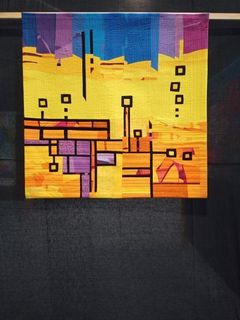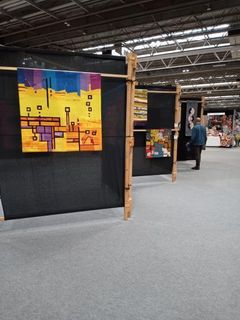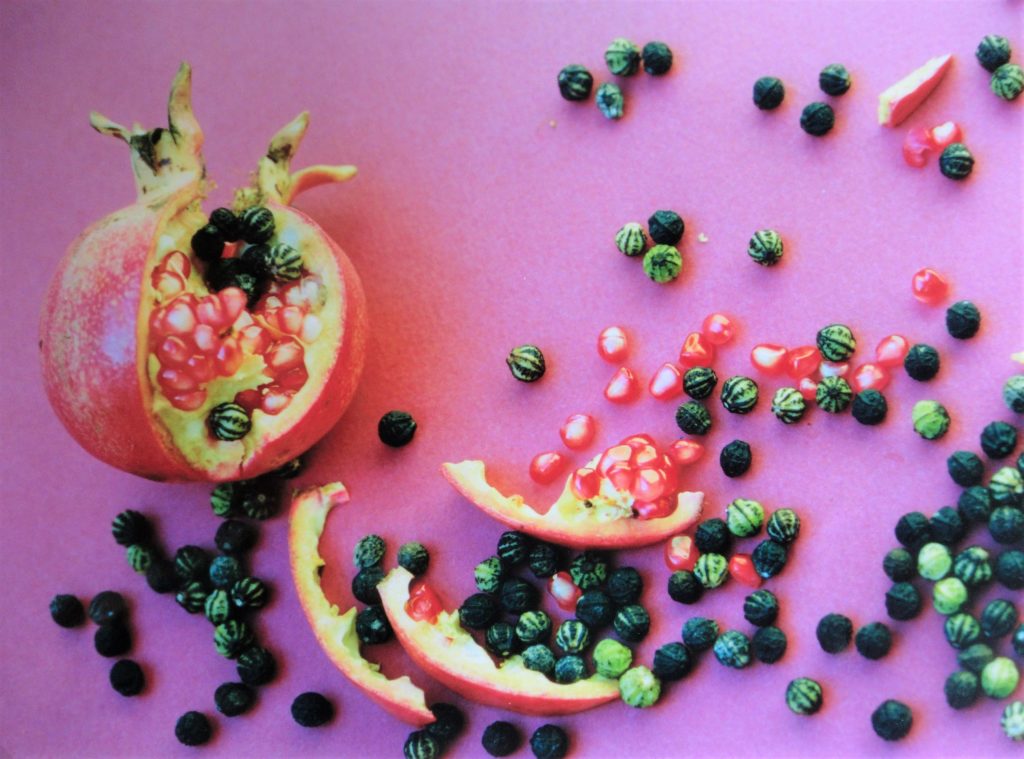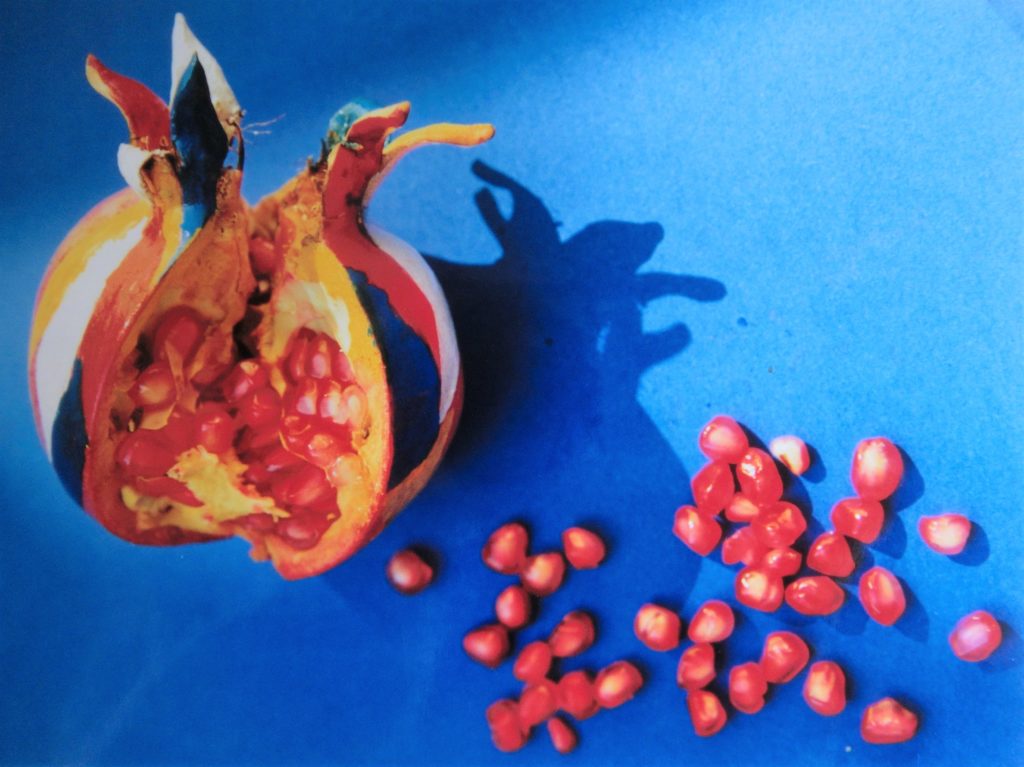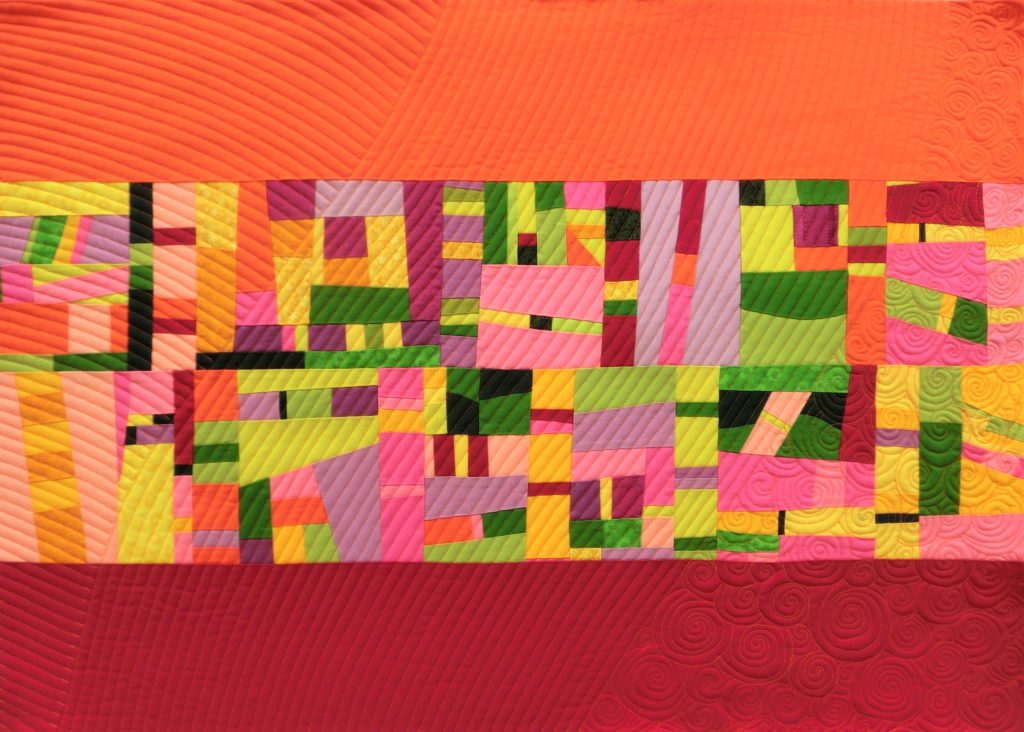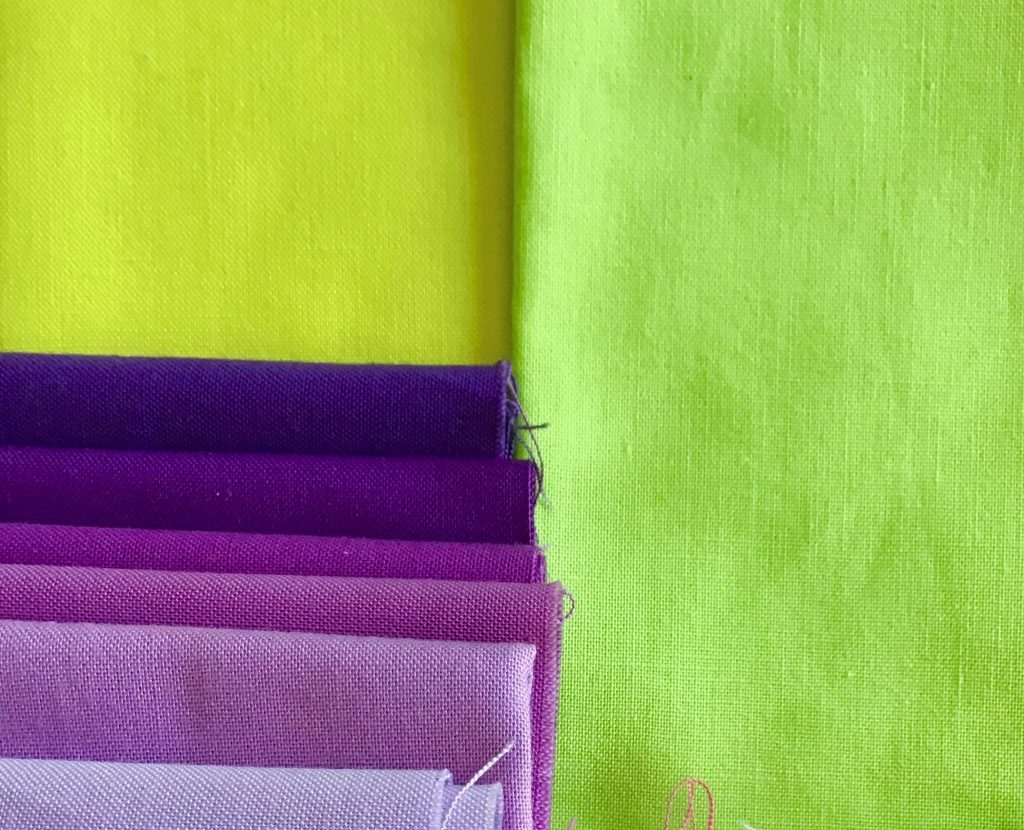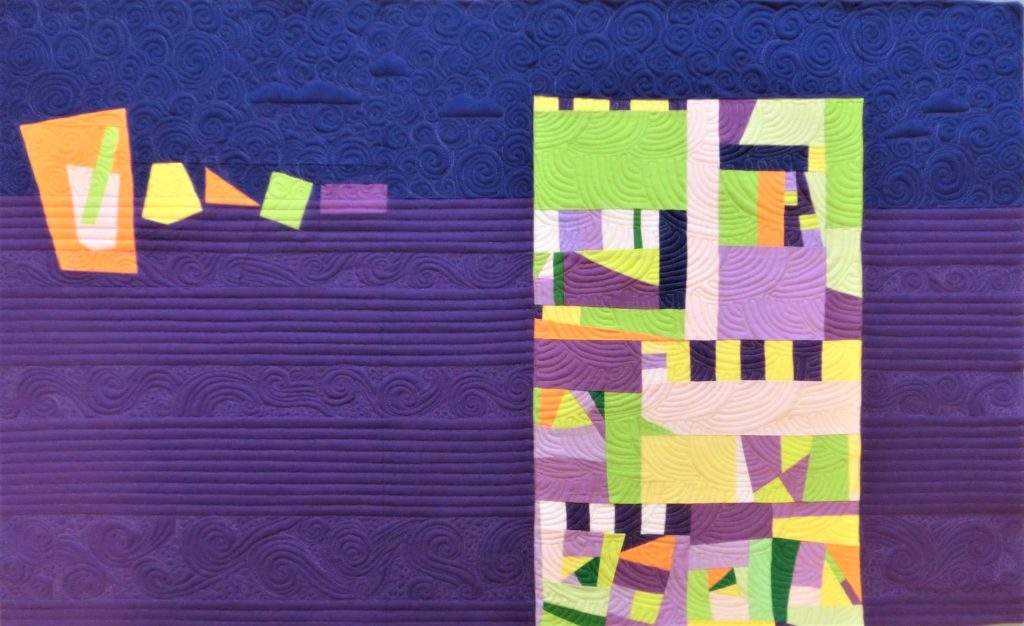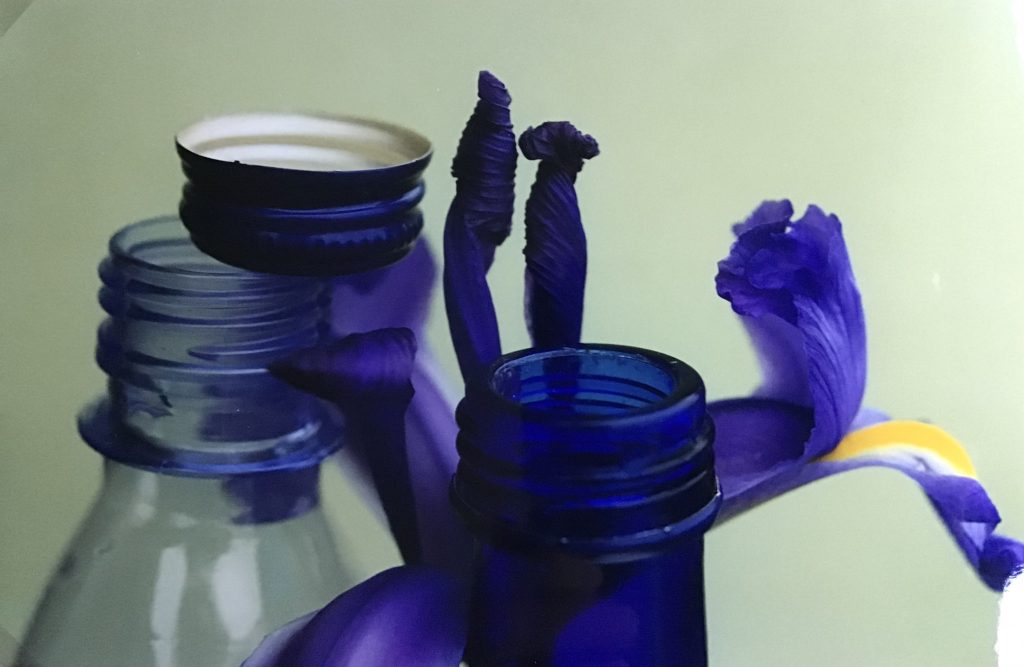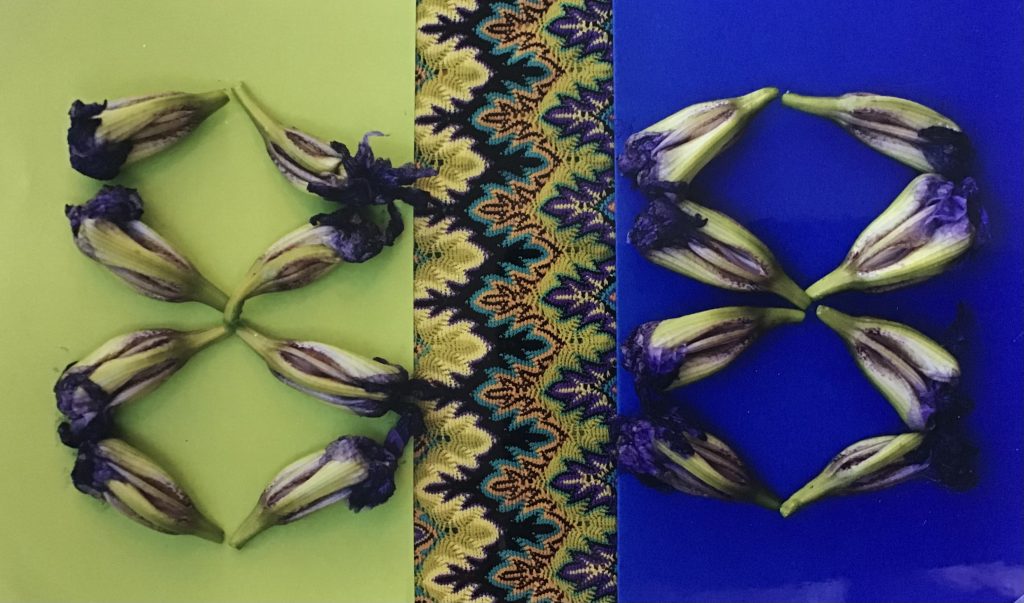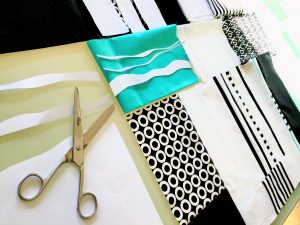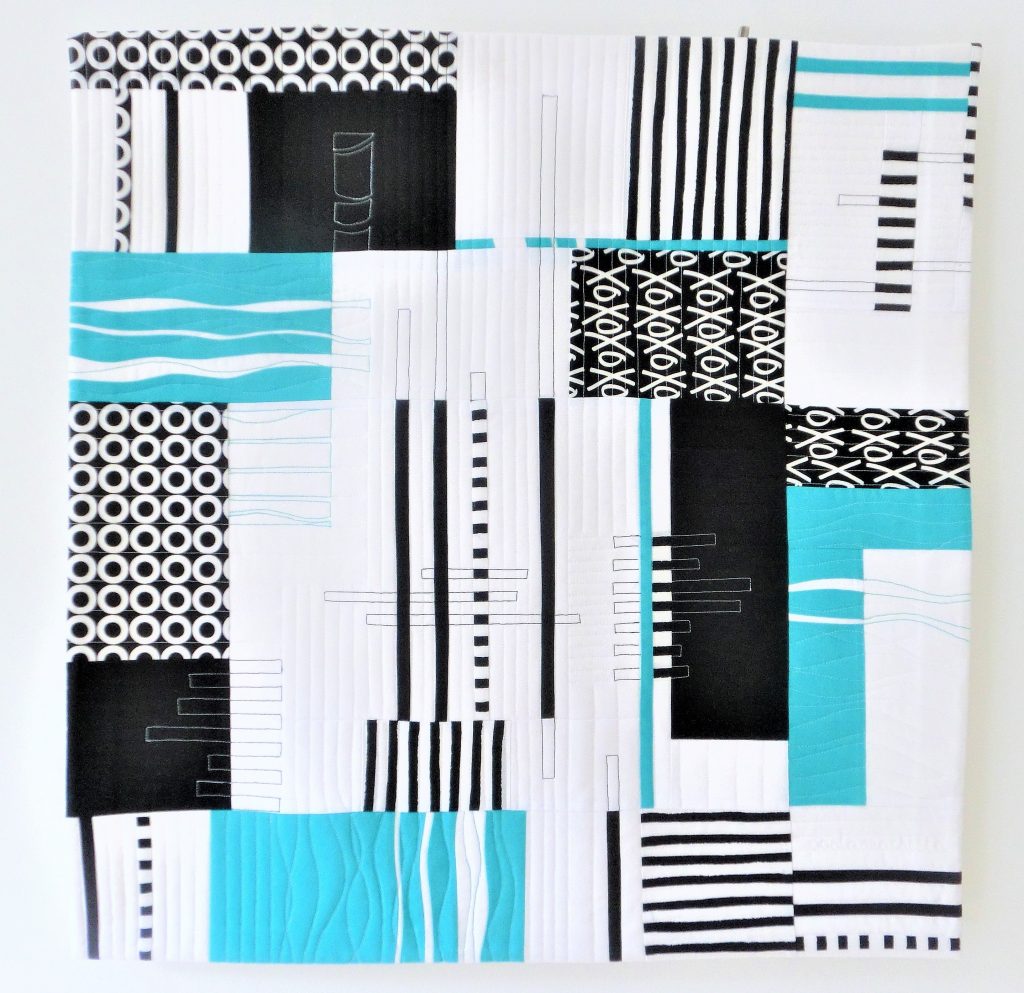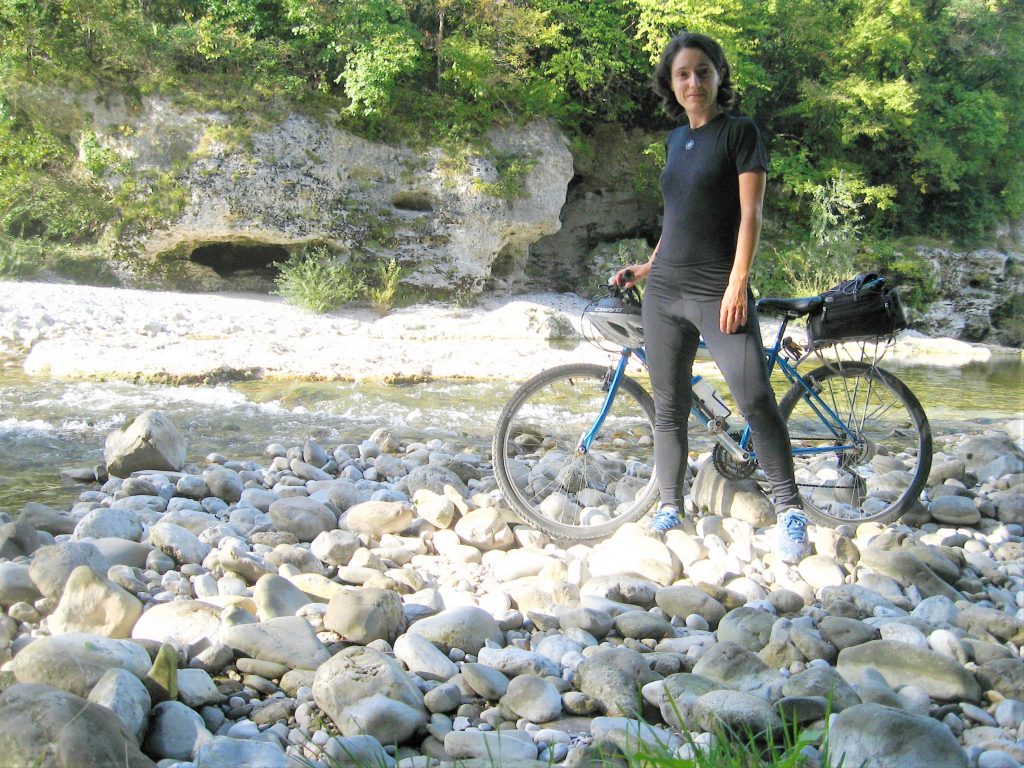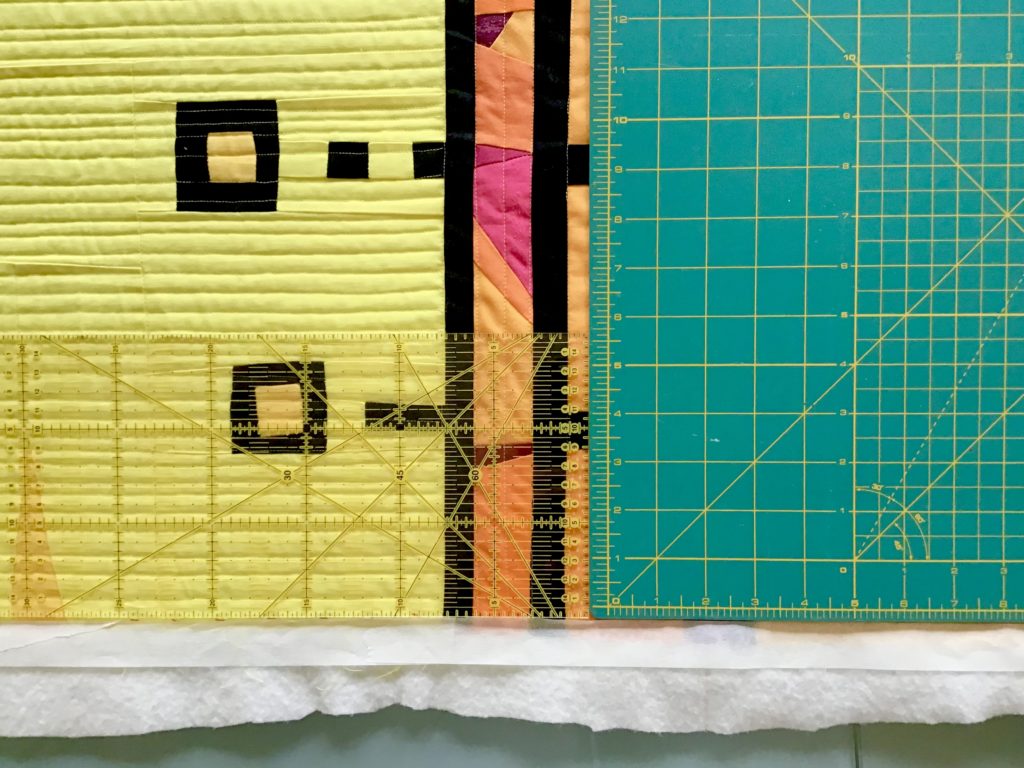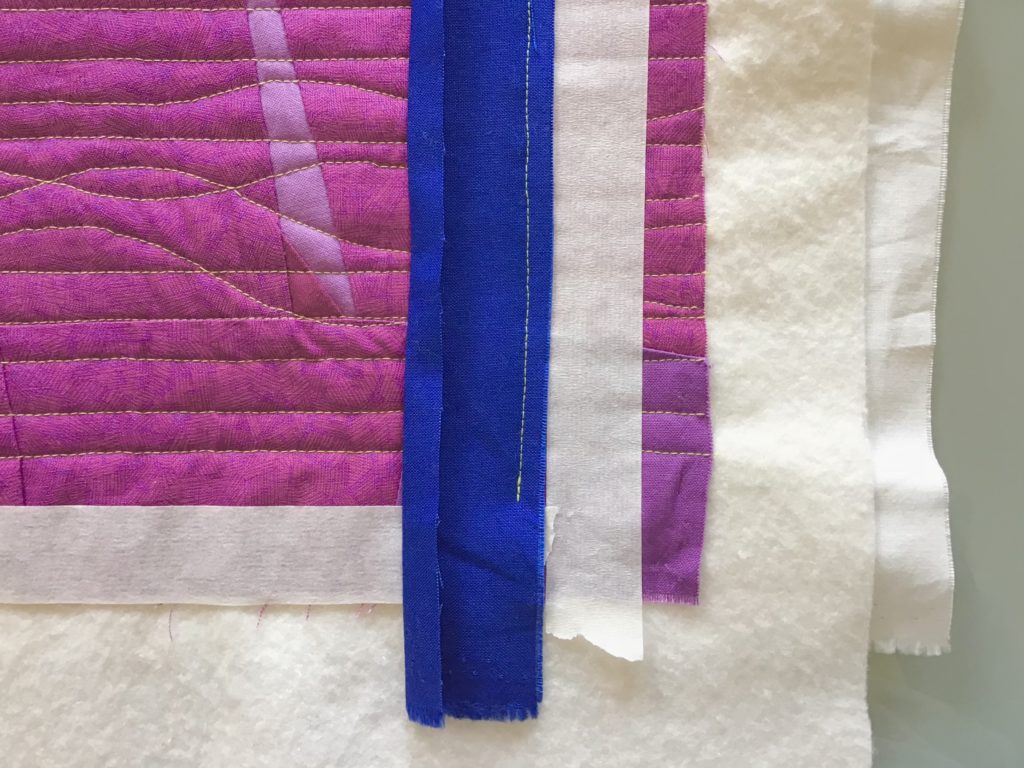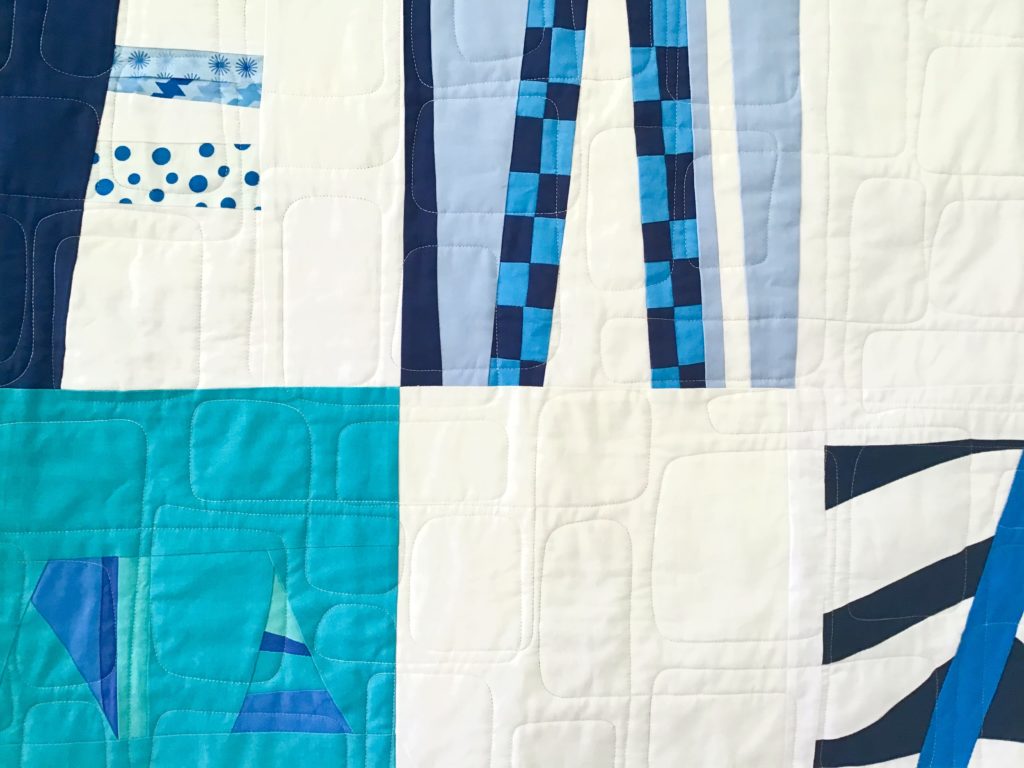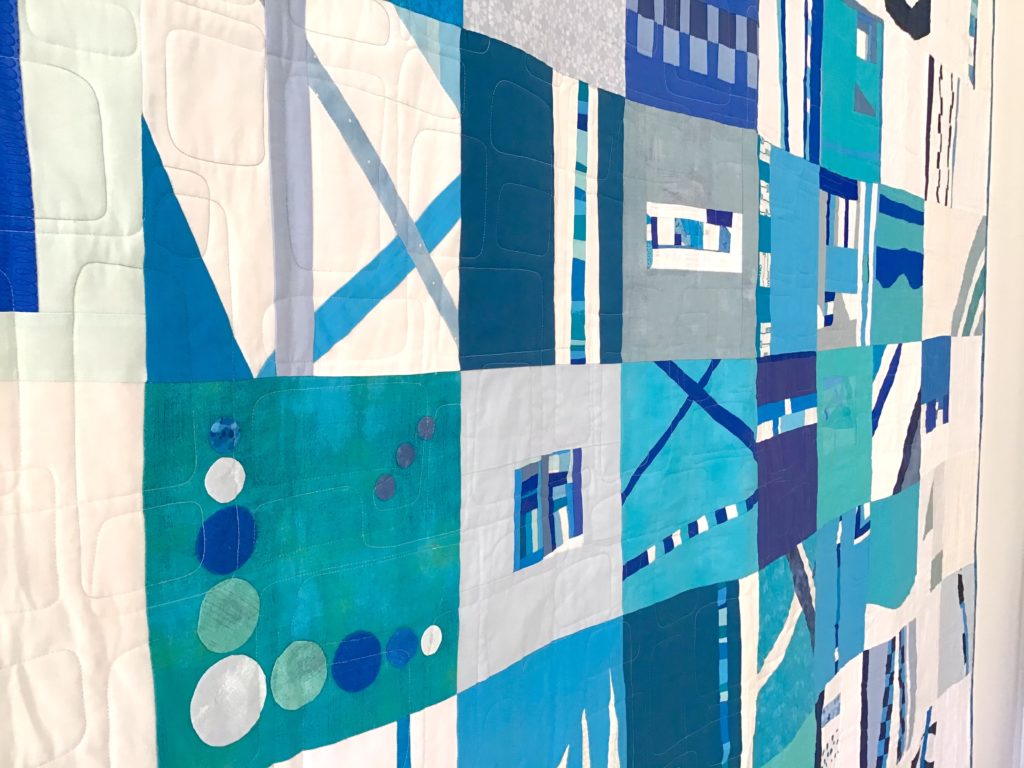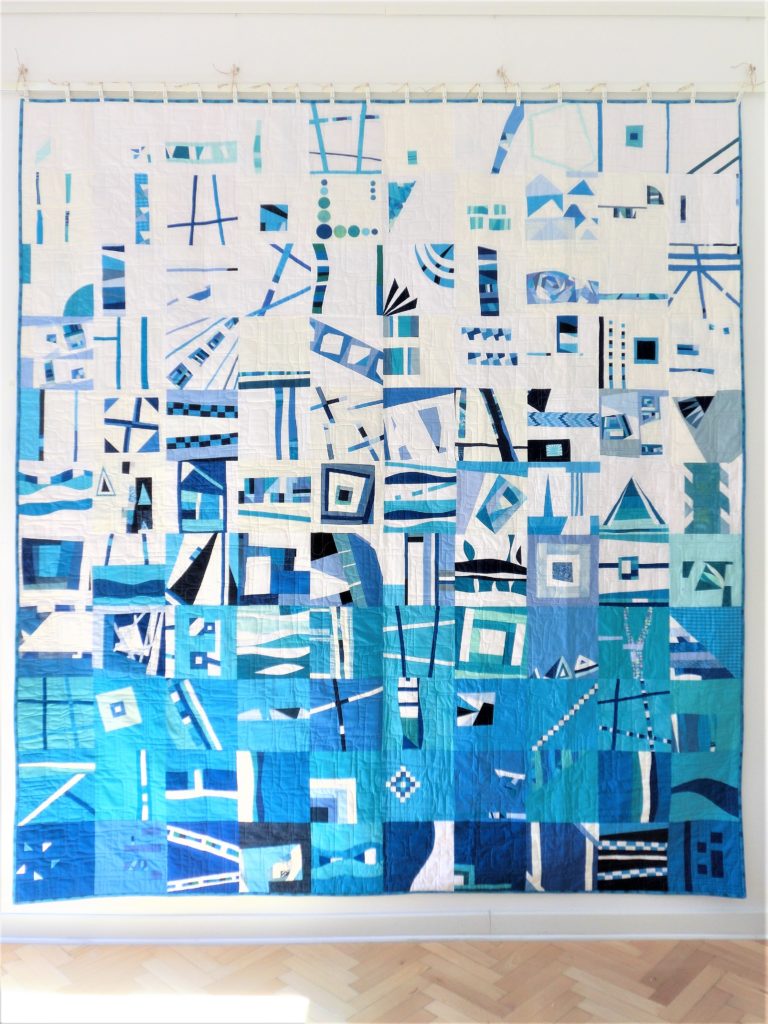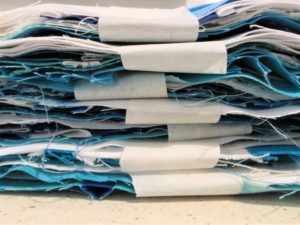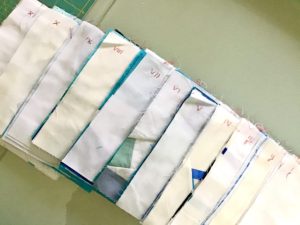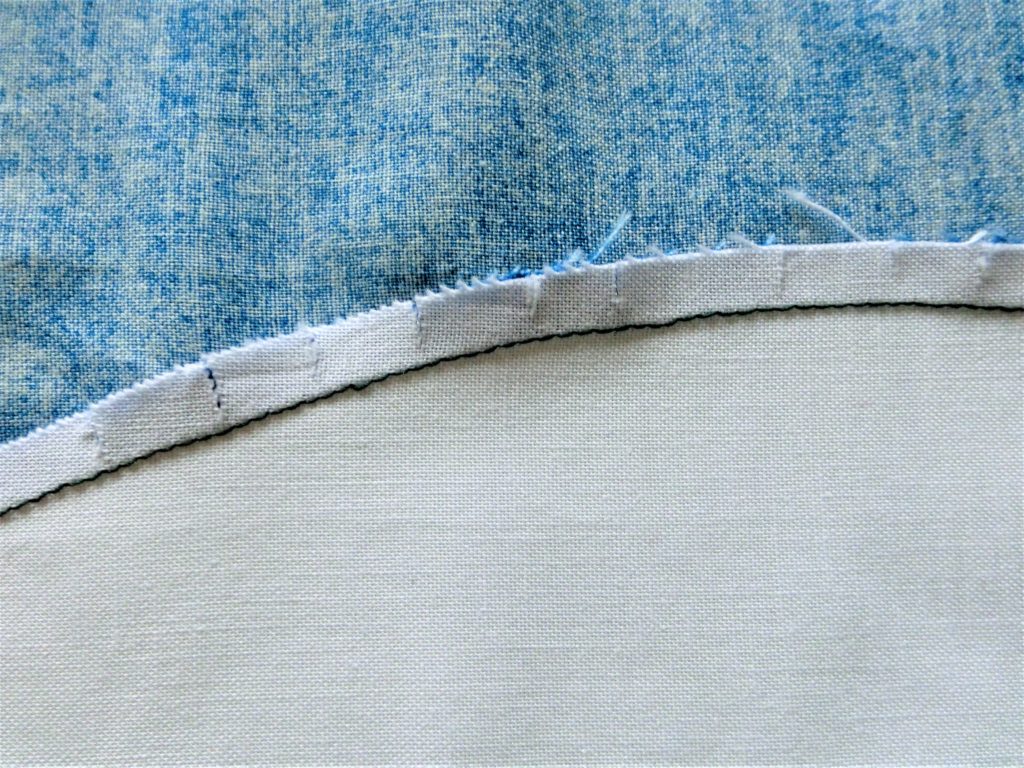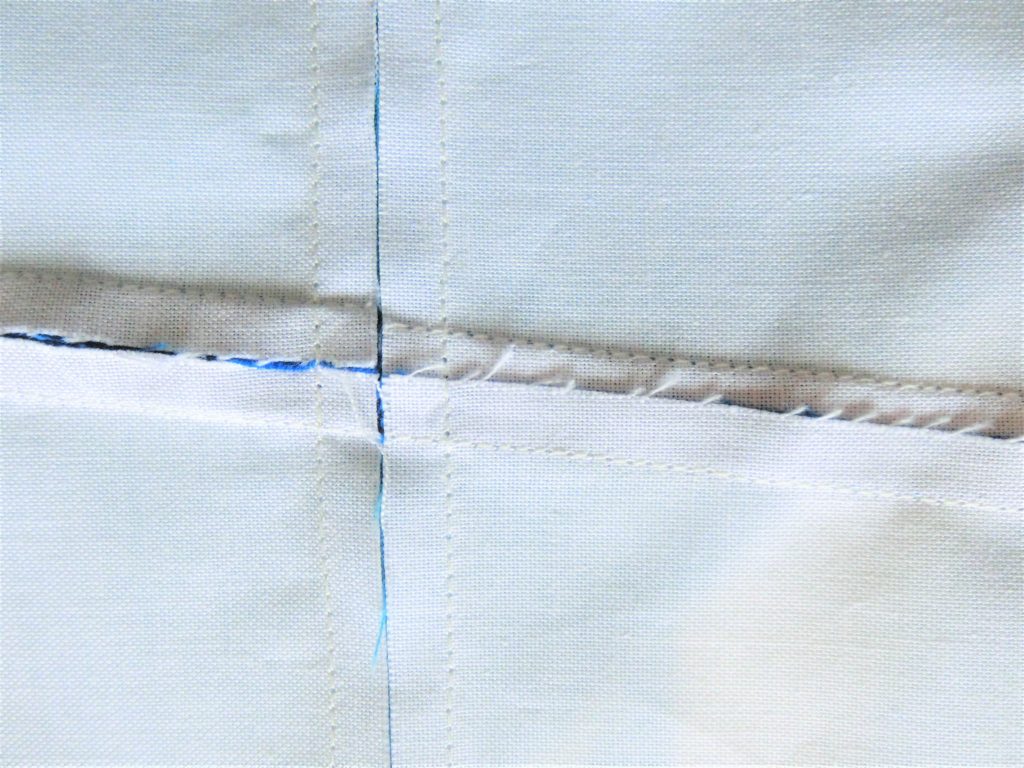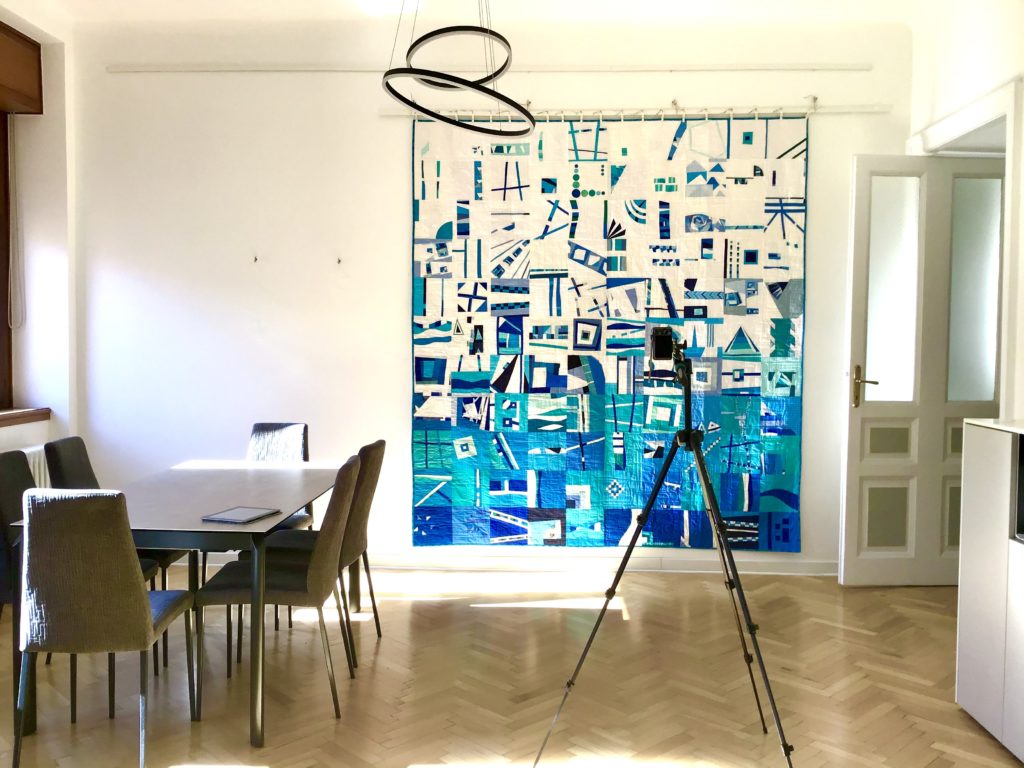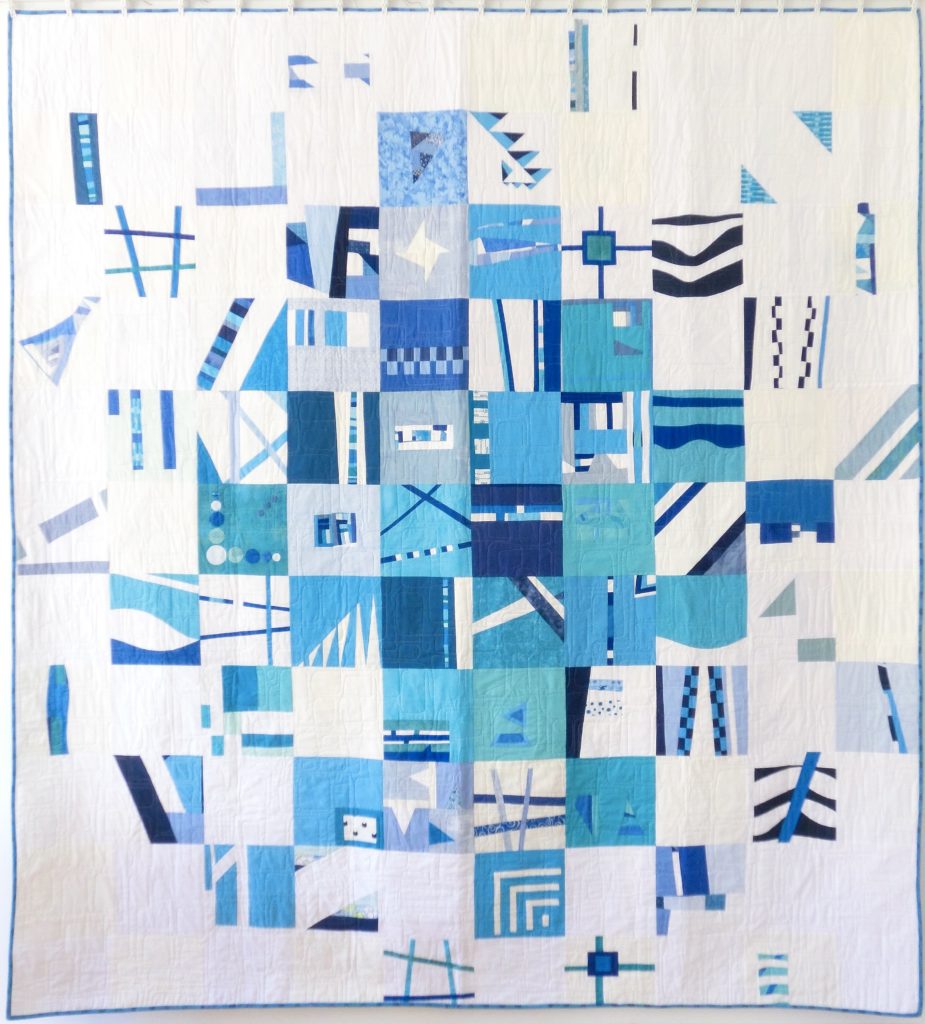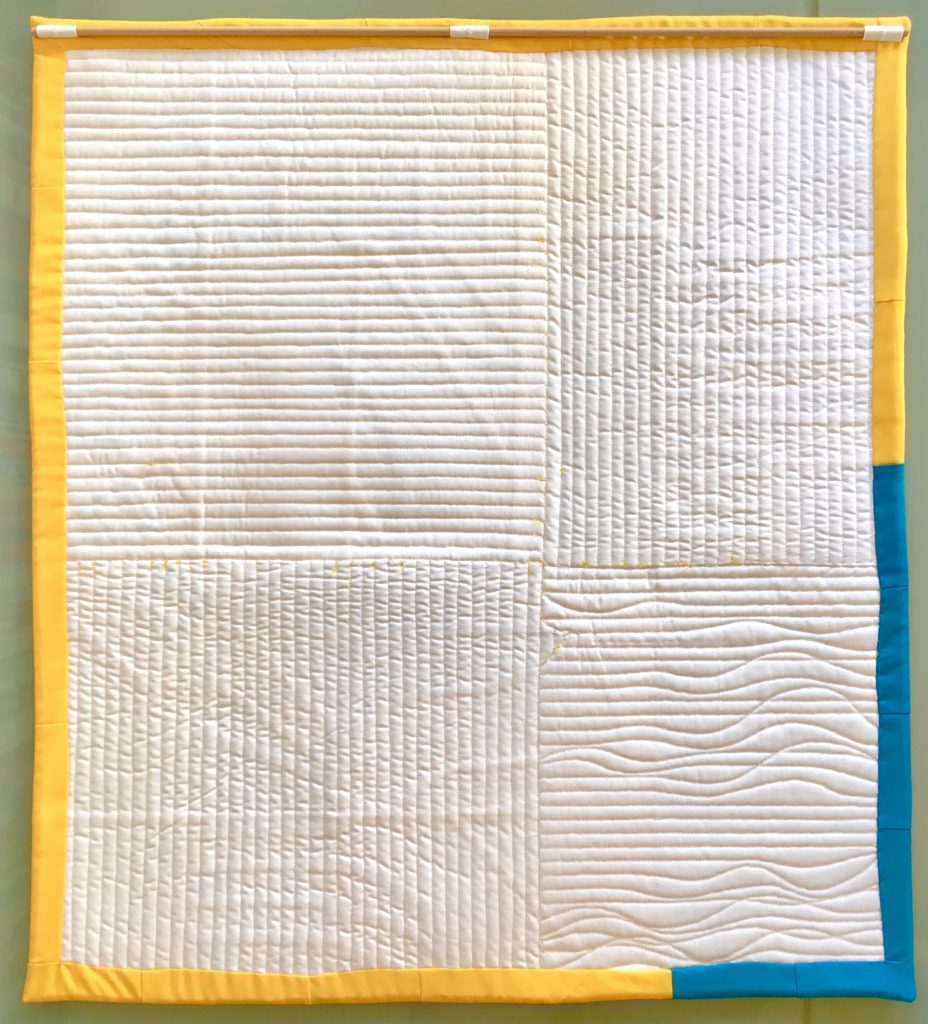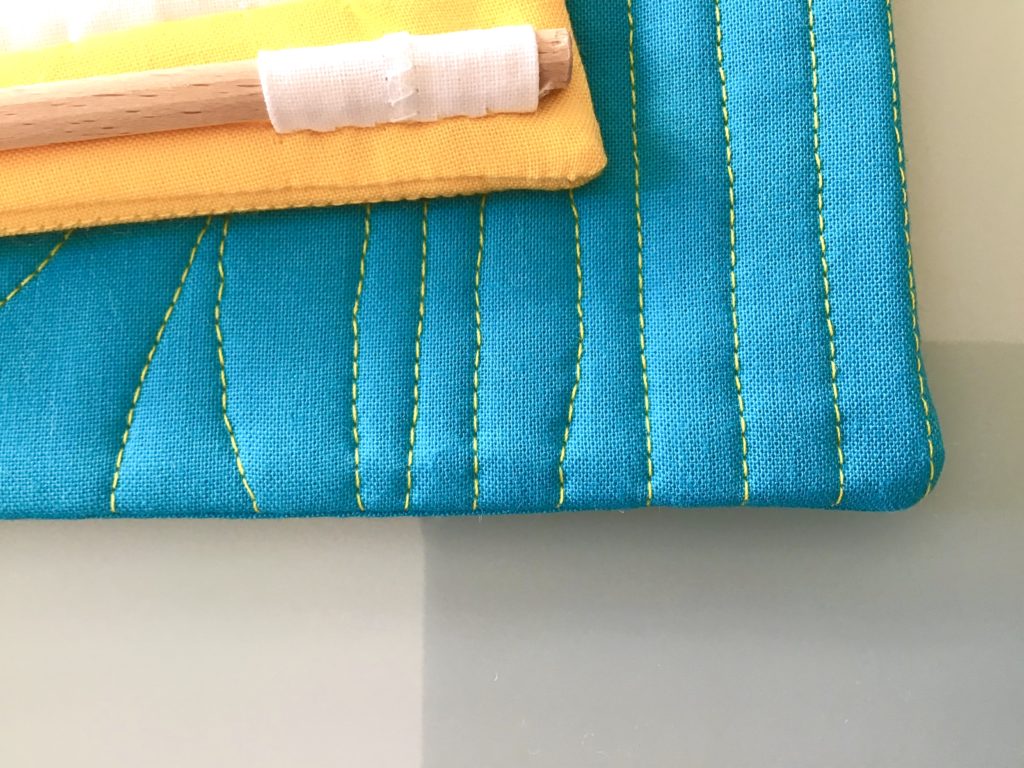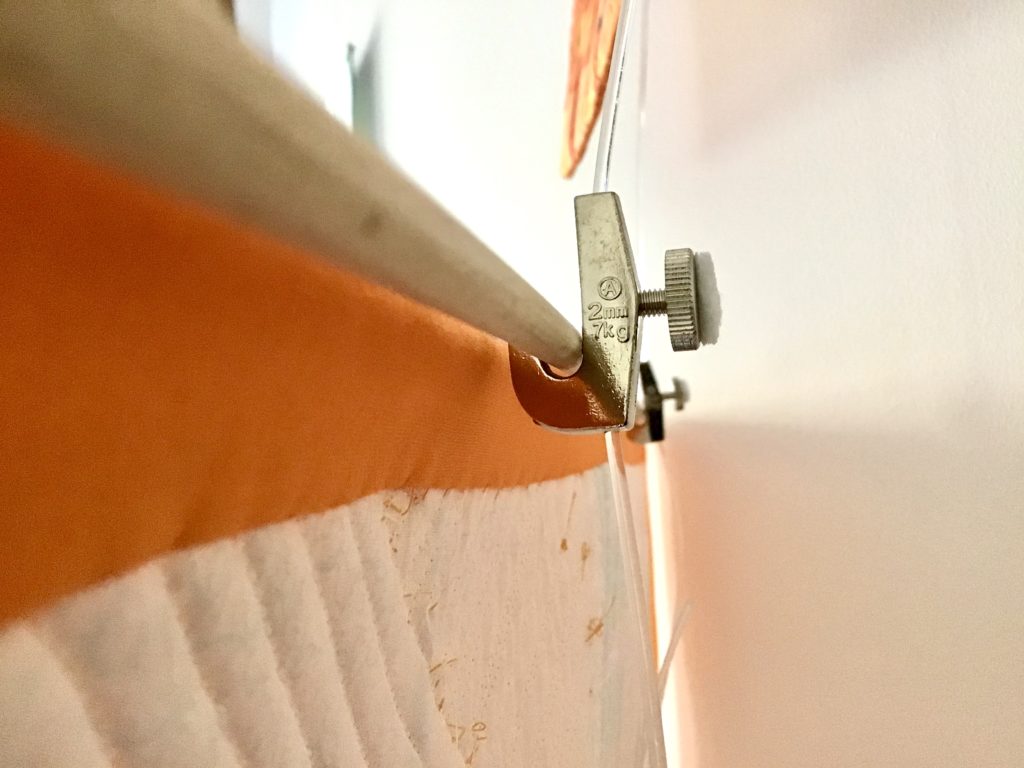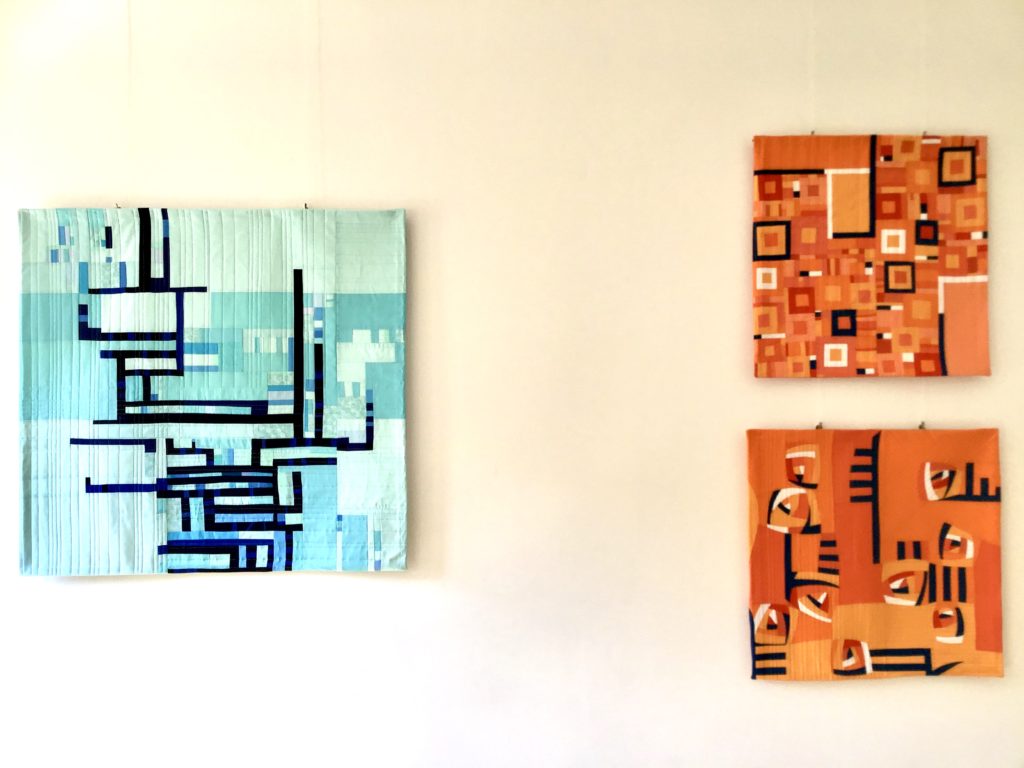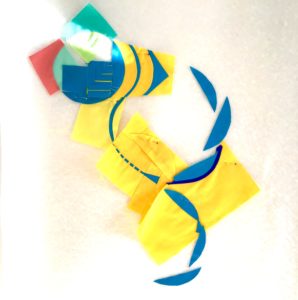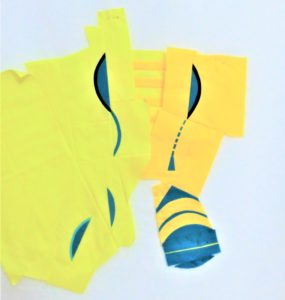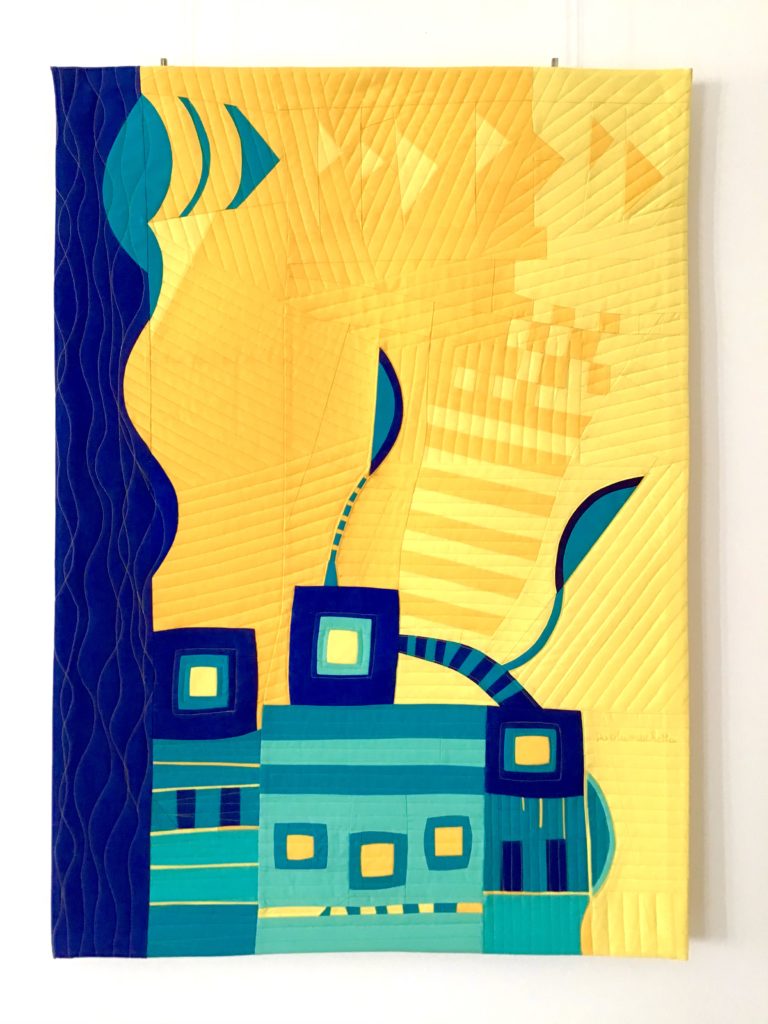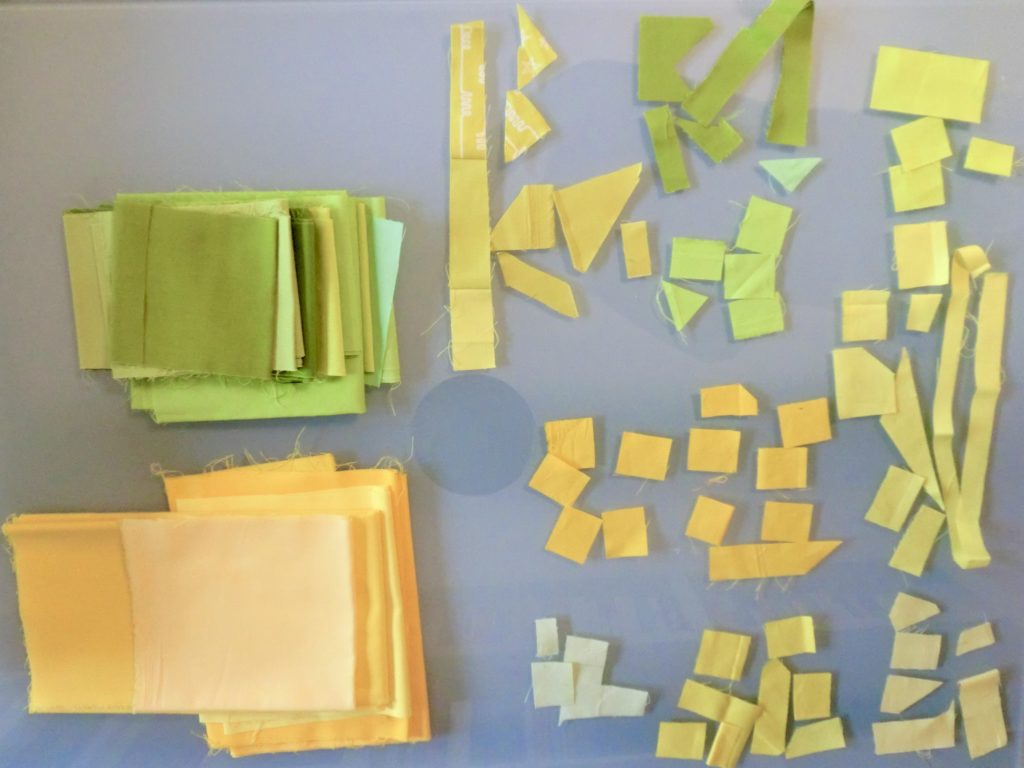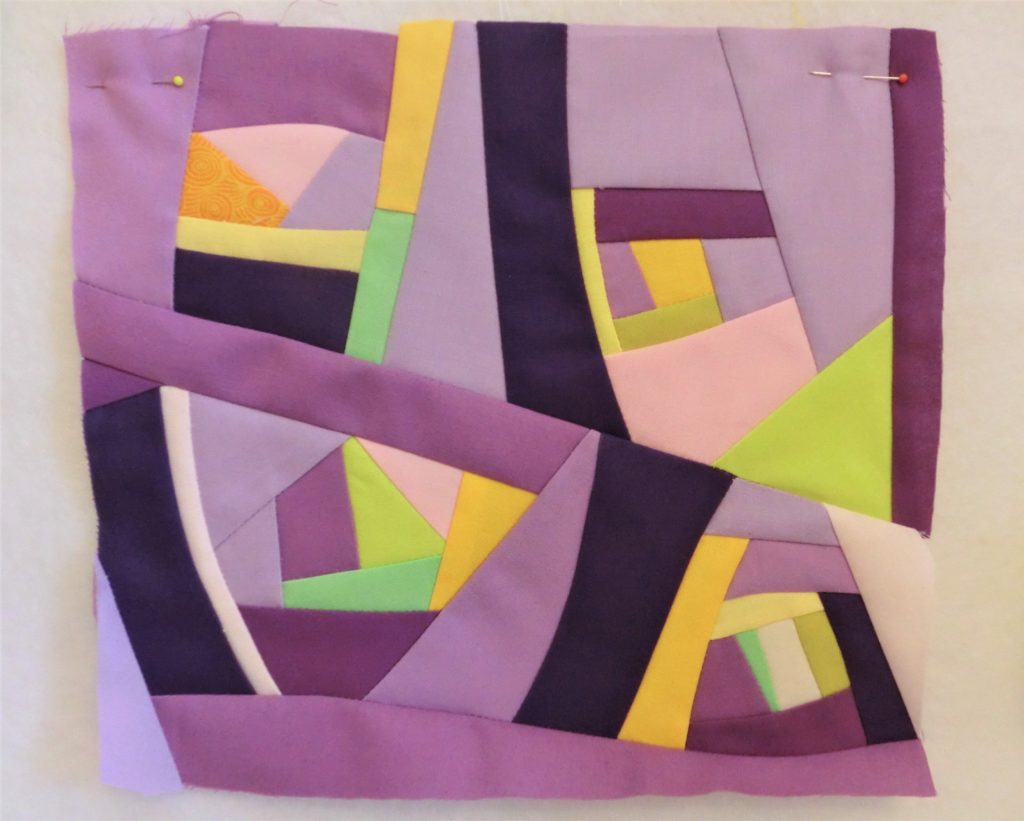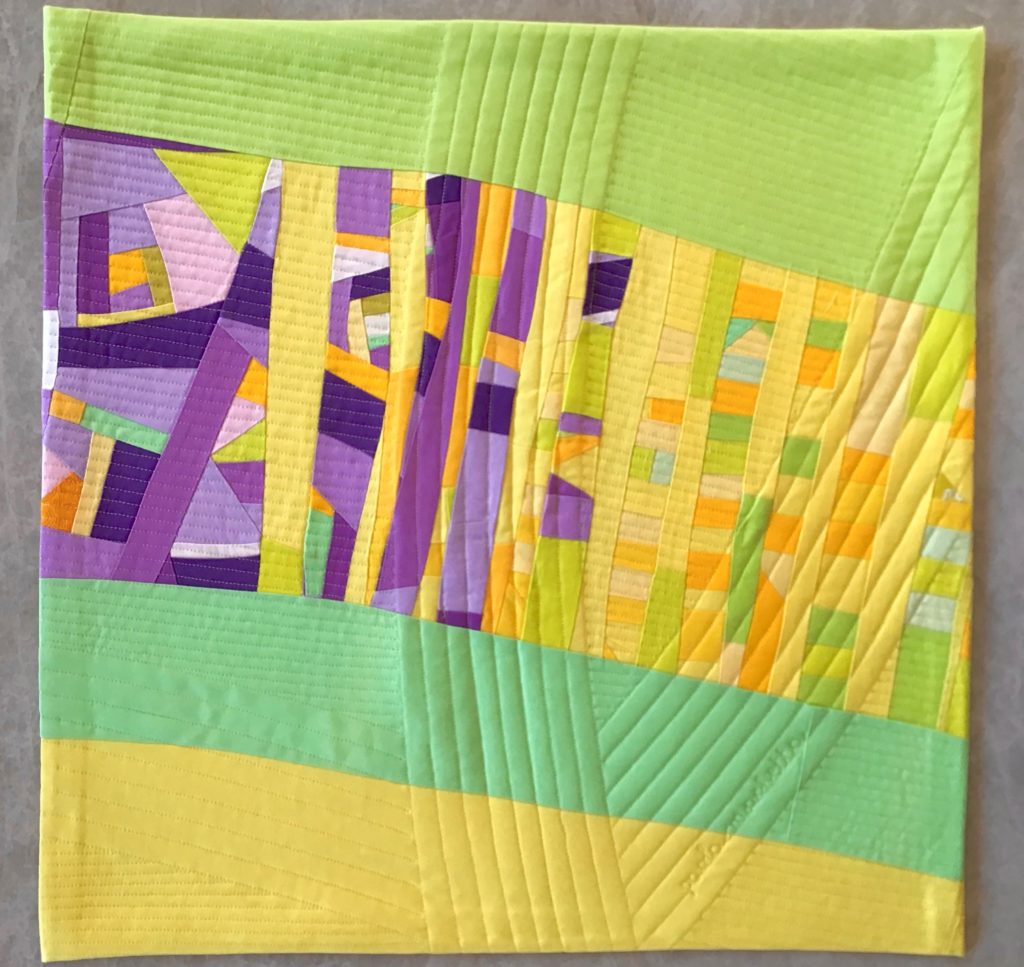In the last year, many virtual doors leading to a connection with the quilting community have been opened.
Participation to quilting contests, taking place fully on line, was a new opportunity: thanks to this, I have submitted my work images and I have participated to Quiltcon Together and to Beyond the Festival of Quilts, whose exhibits were made in format of photo gallery on their web sites.
The lesson learnt there is still alive and kicking, applied in similar fashion for our quilting games, in the fully virtual project Quilt Improv Studio, that I share with Carla @falcolupo and Giovanna @jonikquilts and many other quilters from around the world.
This year, part of the fair venues ventured again into the in-person format, and all the features demonstrating physicality and geographical distance hit back again, reminding me how much remotely I’m seated respect to the epicenters of quilting initiatives.
I rolled my quilt among acid free packing paper. I visited a logistic company, where I paid a deposit for extra costs, to be received after passage through extra European Union custom duties. I followed (with maniac page-refresh need) the tracking of my shipment. I read a later-than-planned, but still in time respect to ultimate deadline, update that clarified: quilt has been delivered (after covering a distance of 1.154 miles). And then, silence. My quilt traveled, but I stayed at home. Was it all going to become real?
Unexpectedly, the virtual connections built in the last year, helped me to visualize what was happening there.
A sense of proximity was brought back by one of the Quilting Angels, who documented her unpacking and hanging operations for many quilts, including mine. I screened the details of photos taken behind-the-scenes, and I learnt how smart was the hanging system with multi-level fixture options. How brilliant was the effect of showing quilts with dark background and a good illumination setup? I even received detail and full scenery view from a MQG contact (pictures below are courtesy of Samantha @threads_of_my_life, who was in Birmingham and recognized my work “East”).
If you’ve not been in the UK in the last days, I invite you to appreciate the +400 quilts participating to the Festival of Quilts 2021, now visible on-line at the following link. Organizers opened the venue in Birmingham to in-person visitors last weekend, but maintained from last year also the use of a nice web platform displaying all photos of received quilts.
An inclusive experience, nowadays, is the one which couples real and virtual opportunities altogether.


